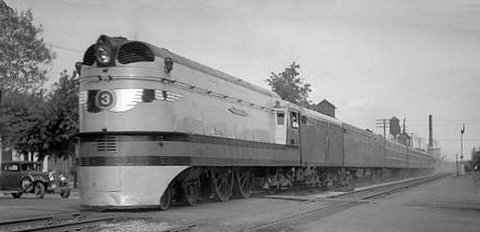…it seems that a bunch of “Unused” Mexican electric locos, have arrived in Montreal. Seems that GE built them many years ago for a pike down there A number of them were wrecked in operations, and then others were never used due to the electrification plans not being implemented.
The the rumour is that they have been bought to be used in the Montreal commuter operations through the Mount Royal tunnel.
There are clearence problems as they sit very high, and the panographs will have to be lowered or changed. In the mean time; they sit in Montreal waiting for whatever plans are affoot.
These are rather steam lined units, compared with the old stuff that was used up until a few years ago.




